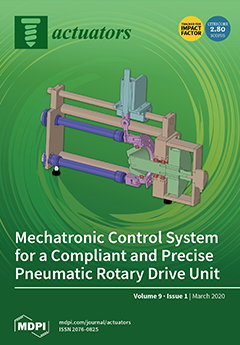The application of Fractional Calculus to control mechatronic devices is a promising research area. The most common approach to Fractional-Order (FO) control design is the PI
λD
µ scheme, which adopts integrals and derivatives of non-integer order λ and
µ. A
[...] Read more.
The application of Fractional Calculus to control mechatronic devices is a promising research area. The most common approach to Fractional-Order (FO) control design is the PI
λD
µ scheme, which adopts integrals and derivatives of non-integer order λ and
µ. A different possible approach is to add FO terms to the PID control, instead of replacing integer order terms; for example, in the PDD
1/2 scheme, the half-derivative term is added to the classical PD. In the present paper, by mainly focusing on the transitory behaviour, a comparison among PD, PD
µ, and PDD
1/2 control schemes is carried out, with reference to a real-world mechatronic implementation: a position-controlled rotor actuated by a DC brushless motor. While using a general non-dimensional approach, the three control schemes are first compared by continuous-time simulations, and tuning criteria are outlined. Afterwards, the effects of the discrete-time digital implementation of the controllers are investigated by both simulation and experimental tests. The results show how PDD
1/2 is an effective and almost cost-free solution for improving the trajectory-tracking performance in position control of mechatronic devices, with limited computational burden and, consequently, easily implementable on most commercial motion control drives.
Full article





